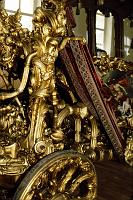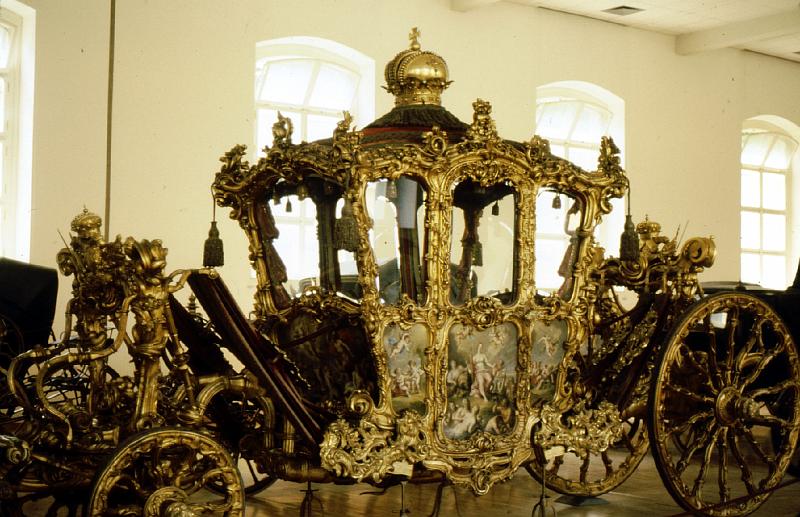




coronation_coach [1 of 84]
Ruth and I were in Vienna in 1974. This slide show will feature the coaches of the Hapsburgs, Schönbrunn Palace and its grounds (the Hapsburg home), St. Paul's Cathedral, and some scenes from around the city.
This is the Imperial Carriage of the Vienna Court. It was designed and built and refurbished many times through the 18th and 19th centuries. The paintings by Franz Xavier Wagneschön (oddly, the name translates to "sweet wagon") in 1763 represent the soverign's virtues.
It had eight windows to permit view by subjects, and had no driver's or footmen's seats to obstruct that view. Instead of a driver, a four riders would sit on the rightmost of each pair of the eight horses. Usually the horses were white. The number of horses also symbolized rank. Princes used six, dukes four and the wealthiest commoners could only use two. The footmen trotted behind the coach holding the mounting stools. And, there were no brakes. Flunkies also trotted behind the coach and on a signal would rush to stop the carriage (which only proceeded at a walk in reviews) by grabbing the wheel spokes.











